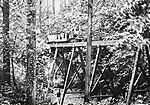St Paul's Church, Little Eaton
Church of England church buildings in DerbyshireGrade II listed churches in Derbyshire

St Paul's Church, Little Eaton is a Grade II listed parish church in the Church of England in Little Eaton, Derbyshire.
Excerpt from the Wikipedia article St Paul's Church, Little Eaton (License: CC BY-SA 3.0, Authors, Images).St Paul's Church, Little Eaton
Vicarage Lane, Erewash
Geographical coordinates (GPS) Address Nearby Places Show on map
Geographical coordinates (GPS)
| Latitude | Longitude |
|---|---|
| N 52.969827777778 ° | E -1.4636166666667 ° |
Address
Vicarage Lane
DE21 5EA Erewash
England, United Kingdom
Open on Google Maps











